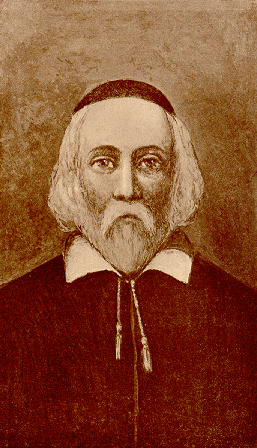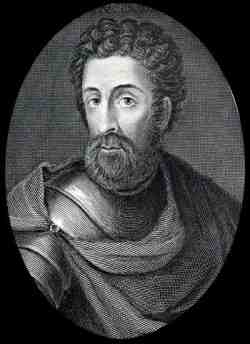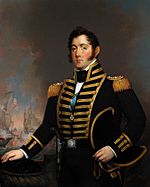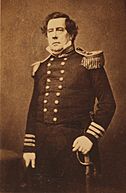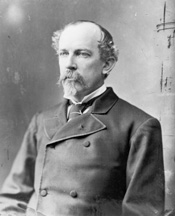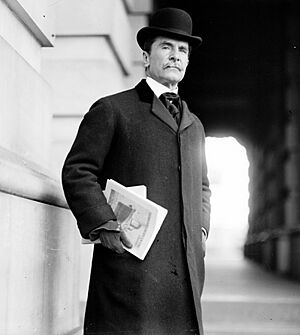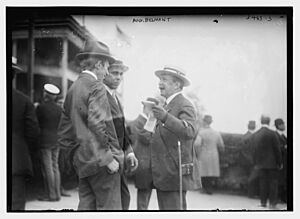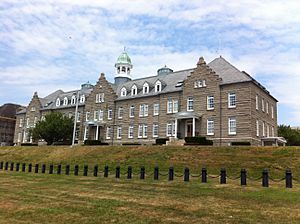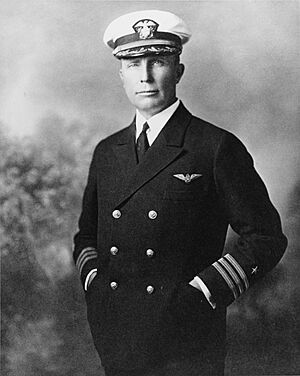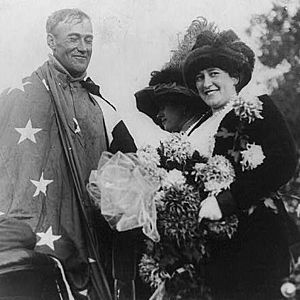Perry family facts for kids
Quick facts for kids Perry |
|
|---|---|
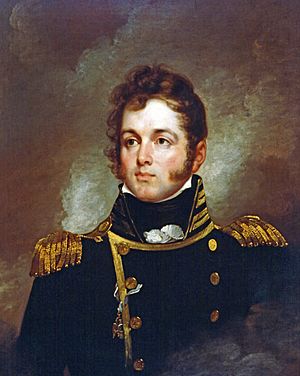
Portrait of Captain Oliver Hazard Perry, USN (1839) by Edward L. Mooney
|
|
| Current region | South Kingstown, Rhode Island and New England |
| Place of origin | England Ireland Scotland |
| Connected families | Rodgers family Belmont family Whitney family Vanderbilt family Randolph Family De Peyster family |
| Estate(s) | Commodore Oliver Perry Farm, Sion Hill (Havre De Grace, Maryland), Belcourt |
| Cadet branches | |
The Perry family is a famous American family from Rhode Island. Many of its members have been important figures in the United States Navy and in government. This family has produced several Navy commanders, pilots, politicians, artists, and more. The Perry family started with an English immigrant who came to South Kingstown, Rhode Island in the mid-1600s. Later, Captain Christopher Raymond Perry and his two sons, Oliver Hazard Perry and Matthew C. Perry, played a huge role in making the United States Navy strong and helping to create the United States Naval Academy.
Contents
- Meet the Perry Family: Their Beginnings
- Christopher Perry's Adventures in the American Revolution
- Two Famous Brothers: Oliver and Matthew Perry
- Important Perrys in the Civil War Era
- The Gilded Age and the Belmont Connection
- Perrys in the Spanish American War and World War I
- Pioneers in Aviation
- Perrys in World War II and Modern Times
- Images for kids
Meet the Perry Family: Their Beginnings
The Rhode Island Perrys: Where They Came From
Christopher Raymond Perry was born on December 4, 1761, in Newport, Rhode Island. His father, Judge Freeman Perry, was a doctor and surgeon during the Revolutionary War. He was also a local judge and leader in South Kingstown, Rhode Island. Christopher's family came from Devon, England. His great-grandfather, Edward Perry, settled in Sandwich, Massachusetts, around 1650.
Christopher's mother, Mercy Hazard, also had interesting family roots. She was a descendant of Captain Richard Raymond, who came to Salem, Massachusetts, around 1629 from England. Mercy was also related to Governor Thomas Prence, a political leader and governor of the Plymouth Colony. Plus, she was a descendant of two Mayflower passengers who signed the Mayflower Compact: Elder William Brewster, a Pilgrim leader, and George Soule.
Christopher Perry's Adventures in the American Revolution
When he was just 14, Christopher Perry joined a local fighting group called the Kingston Reds during the American Revolution. He then served on a privateer ship, which was a private ship allowed to attack enemy ships. After one trip, he joined another privateer, the Mifflin. This ship was captured by the British, and Perry was held on a terrible prison ship called the Jersey in New York harbor. He managed to escape after three months!
In 1779, Perry joined the official Continental Navy on the frigate USS Trumbull. On June 1, 1780, the Trumbull fought a tough battle against a British ship called the Watt. Both sides had many casualties, but the fight ended without a clear winner.
Perry later joined another privateer, but it was also captured near Great Britain. He became a prisoner in Newry, Ireland, where he met his future wife, Sarah Wallace Alexander. Perry escaped again by pretending to be a British sailor and sailed to the Virgin Islands. From there, he made his way to Charleston, South Carolina, just before the war ended in 1783.
Life After the War
After the war, Perry worked on a merchant ship that sailed to Ireland. He was able to bring Sarah, his future wife, back to the United States. They got married in Philadelphia on August 2, 1784. The young couple then moved to South Kingstown, Rhode Island, to live with Perry's parents. Their first child, Oliver Hazard Perry, was born there in August 1785.
Sarah Wallace Alexander (1768–1830) was born in County Down, Ireland. She was a descendant of an uncle of William Wallace, a famous Scottish knight. William Wallace is known for leading a fight for freedom during the Wars of Scottish Independence. Today, he is remembered as a national hero in Scotland.
Two Famous Brothers: Oliver and Matthew Perry
Oliver Hazard Perry (1785–1819) was a very important American naval commander. He was born in South Kingstown, Rhode Island. Oliver was the son of Christopher Raymond Perry and Sarah Wallace Alexander. He was also the older brother of Commodore Matthew C. Perry.
Oliver Perry served in several conflicts, including the Quasi-War against France and the Barbary Wars. He also fought piracy and the slave trade in the Caribbean. However, he is most famous for his brave actions in the War of 1812. In 1813, during the Battle of Lake Erie, Perry oversaw the building of a fleet of ships in Erie, Pennsylvania. He became known as the "Hero of Lake Erie" for leading American forces to a major naval victory. This victory was a turning point in the war for the western territories.
Perry is remembered for the words on his battle flag: "Don't Give Up the Ship." This was a tribute to his friend Captain James Lawrence, who said these words as he was dying. Perry is also famous for his message to General William Henry Harrison, which said: "We have met the enemy and they are ours."
Matthew Calbraith Perry (1794–1858) was another important Commodore in the United States Navy. He commanded ships in the War of 1812 and the Mexican–American War. Matthew Perry is best known for his role in opening Japan to the West with the Convention of Kanagawa in 1854.
Matthew Perry was very interested in educating naval officers. He helped create a system that influenced the training at the United States Naval Academy. He also strongly supported modernizing the U.S. Navy with new technologies like the steam engine. Because of his efforts, he is often called "The Father of the Steam Navy" in the United States.
Important Perrys in the Civil War Era
Rear Admiral Christopher Raymond Perry Rodgers (1819–1892) was born in Brooklyn, New York. He was an officer in the United States Navy and served as Commander-in-Chief of the Pacific Squadron during the Mexican–American War and the American Civil War. He also led the United States Naval Academy as its Superintendent.
Matthew Calbraith Butler (1836–1909) was born in Greenville, South Carolina. He was the son of U.S. Congressman William Butler and Jane Tweedy Perry. Matthew Butler became a major general in the Confederate Army during the Civil War. After the war, he served three terms as a United States Senator from South Carolina. He also became a major general in the U.S. Army during the Spanish–American War.
The Gilded Age and the Belmont Connection
On November 7, 1849, August Belmont Sr. married Caroline Slidell Perry (1829–1892), who was the daughter of Matthew Calbraith Perry. August Belmont was a financier, and his sons became involved in politics.
Perry Belmont (1851–1947) was a Democrat who served in the United States House of Representatives for New York. He was known for his work on foreign affairs. In 1898, during the Spanish–American War, Perry served in the Army as an Inspector General. He was also appointed the United States Minister to Spain that same year. During World War I, even though he was 65, Belmont joined the United States Army Quartermaster Corps as a captain.
August Belmont Jr. (1853–1924) was an American financier. He helped fund the building of the first New York subway system (1900–1904). He also financed and led the construction of the Cape Cod Canal in Massachusetts. Belmont bought the land for and built New York's Belmont Park racetrack, which was named after his father. He was a major owner and breeder of thoroughbred racehorses.
Oliver Hazard Perry Belmont (1858–1908) was also involved in banking. He was a publisher of a weekly paper called Verdict. He also served as a Democrat in the United States House of Representatives for New York.
Perrys in the Spanish American War and World War I
Rear Admiral Raymond Perry Rodgers (1849–1925) was an officer in the United States Navy. He was the second head of the Office of Naval Intelligence and served as the 12th President of the Naval War College. He fought in the Spanish–American War. During the war, he was an Executive Officer on the battleship Iowa and was recognized for his brave conduct in battle.
Rear Admiral Thomas S. Rodgers (1858–1931) was another officer in the United States Navy. He served during both the Spanish–American War and World War I.
William Ledyard Rodgers (1860–1944) was a vice admiral in the United States Navy. His career included service in the Spanish–American War and World War I. He also served as President of the Naval War College. William Rodgers was also a well-known historian, especially for his writings on ancient naval warfare.
Pioneers in Aviation
John Rodgers (1881–1926) was a U.S. Navy officer and a pioneering aviator. He led the first attempt to fly non-stop from California to Hawaii. This was a huge challenge for the aircraft and navigation technology of the time. Rodgers commanded a flying boat called the PN-9 No. 1. The Navy placed 10 guard ships along the route to help refuel or rescue the planes if needed. Rodgers' plane departed on August 31, but the other plane had an engine failure and had to land in the ocean, though it was safely recovered.
Calbraith Perry Rodgers (1879–1912) was an American aviation pioneer and a cousin of John Rodgers. He made the first airplane flight across the U.S. from September 17 to November 5, 1911. He made many stops, some planned and some accidental. A publisher offered a $50,000 prize for the first person to fly coast-to-coast in less than 30 days. Rodgers found a sponsor, and he named his plane, a Wright Model EX, "Vin Fiz" after their soft drink. A special train followed him with spare parts. This amazing flight made him a national celebrity. Sadly, he died in a crash a few months later during an air show.
Perrys in World War II and Modern Times
The Right Reverend James DeWolf Perry (1871–1947) was an American Episcopal clergyman. He served as the 7th Bishop of Rhode Island and later as the 18th Presiding Bishop of the Episcopal Church.
John LaFarge Jr. (1880–1963) was an American Jesuit Catholic priest. He was known for his work against racism and anti-semitism. Before World War II, he worked on a special message from the Pope against racist ideas, though it was never officially released.
Oliver Hazard Perry La Farge (1901–1963) was an American writer and expert on Native American culture. He is best known for his 1930 novel Laughing Boy, which won a Pulitzer Prize. Oliver's older brother, Christopher La Farge (1897–1956), was an artist, poet, and novelist who often wrote about life in Rhode Island. Christopher's son, Peter La Farge (1931–1965), was a folk music singer in Greenwich Village. He worked with famous musicians like Bob Dylan and Pete Seeger. Peter is famous for writing the song "The Ballad of Ira Hayes."
Perry's grandniece, Ruth Ann Black (1893–1964), married Willard F. Jones, who was a naval architect and an executive at Gulf Oil.
Raymond P. R. Neilson (1881–1964) was an American painter and a teacher at the National Academy of Design. Neilson studied art at several famous schools, including the Art Students League of New York and the Académie Julian in Paris.
Images for kids


